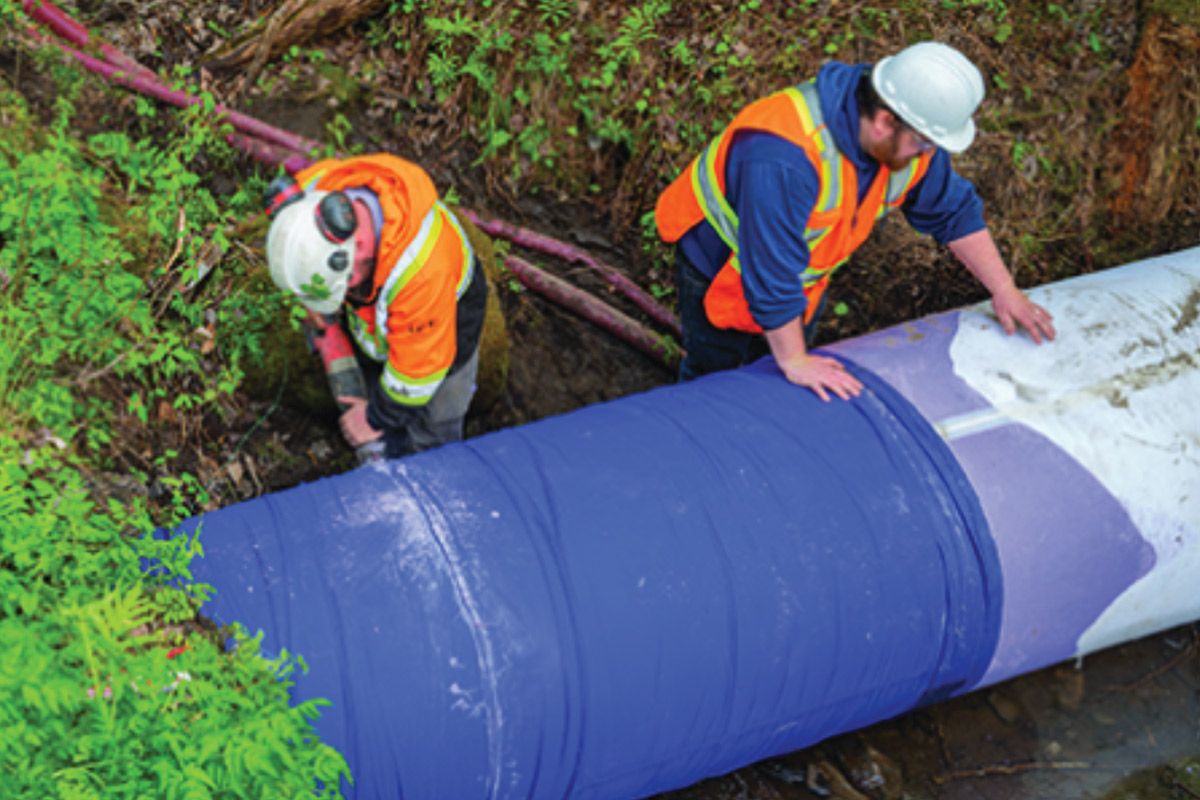
The Burrard Street Trenchless Crossing in Vancouver, British Columbia
In March 2016, City of Vancouver Sewer Operations embarked on a major trenchless crossing at the intersection of Burrard Street and Broadway in Vancouver, British Columbia. The trenchless crossing was a part of the Burrard South improvement project. The project consisted of major infrastructure improvements from the foot of the Burrard Street bridge to West 17th Avenue, including a crossing of West Broadway. Improvements included the twinning of the existing combined storm main, road improvements, street repaving and installation of a new water main.
RELATED: Vancouver, British Columbia, Adds Trenchless Construction Methods to Its Toolbox
Traditionally, the majority of Vancouver’s sewer infrastructure work has been completed using open-cut construction methods. While the City’s construction crews are proficient in these methods, the demand for a less disruptive and more efficient solution was explored in this situation.

After much consideration, Vancouver city planners made the decision to complete the Burrard Street Crossing using trenchless methods.
Burrard Street is a busy north-south arterial road within the City of Vancouver. West Broadway is a major truck, transit and traffic route connecting the city traffic from east to west. After taking the traffic impacts, pedestrian impacts and disruption to local business into consideration, city planners made the decision to complete this portion of the project using trenchless methods.
The crossing was over 90 m in length and was completed in very challenging conditions. In May 2015, trenchless technology was introduced into the City’s Sewer Operations department and successfully utilized on four major in-house trenchless construction projects. The success of these four projects gave Sewer Operations the confidence to complete this project in-house as well.
RELATED: Akkerman Inc. Marks 40 Years
The scope of the work included installing a separated storm and sanitary wastewater system. For the Broadway crossing, the decision was made to complete the work by trenchless methods using an Akkermann 4800 guided boring machine with 24- and 36-in. cutterheads. The length for both the storm and sanitary sewers was 92 m.
Shoring and excavation of the launch pit was not easy. With parallel underground utilities running on one side of the launch pit and the existing combined sewer main on the other, excavating and shoring the 40-ft long by 16-ft wide by 18-ft deep launch pit took considerable attention to safety. To make the excavation even more of a challenge, the bottom 10 ft of the excavation material was contaminated with hydrocarbons due to a gas station located adjacent to the launch pit. Because hydrocarbon levels were above allowable limits, the excavated material had to be handled with due care, and was transported and disposed of at an approved disposal facility by approved haulers.
After excavation of the launch pit, the crew started the process of pushing the pilot tubes, the laser was set for the desired grade of 2.27%. Even though the ground was contaminated with hydrocarbons, the soil along the alignment of the crossing was favorable for the pilot tube methodology. This was confirmed with boreholes and a sweep with ground penetrating radar. The pilot tubes were installed in just 16 hours. After the pilot hole was completed, crews completed an augering phase to enlarge the hole and then set up for the 36-in. Akkerman powered cutting head and the direct jack of the Hobas pipe.
RELATED: Manhole Rehabilitation in Victoria, British Columbia
Direct jacking was another first for the trenchless crew. After some very minor setbacks the pipe was installed, and the crossing completed to the desired grade and invert.
After the storm main crossing was complete, crews started the set up for the 24-in. sanitary. Again, the pilot tubes were pushed across at the same rate as before. For the sanitary, the augers were downsized from 16 in. to 11.5-in., which would fit the 24-in. power cutting head. The smaller augers allowed for efficiencies in the augering process and reduced time to get across. As with the storm main, the sanitary was direct jacked at a grade of 2.27 percent.

City crews used an Akkermann 4800 guided boring machine with 24- and 36-in. cutterheads to direct jack Hobas pipe.
The crew persevered and overcame many challenges while completing this project. Challenges included equipment failures, contaminated soil and minor scheduling delays, successfully complete the crossings while using the new methods.
This trenchless crossing was very large undertaking from inception to completion. City staff did a great job completing the project with less than one year of experience in trenchless construction, and the first time direct jacking Hobas pipe. This further demonstrated the great teamwork between the internal design and construction teams at the City of Vancouver. With continued success in trenchless construction, Sewer Operations will continue to look for construction projects where trenchless can be cost effective and efficient.




